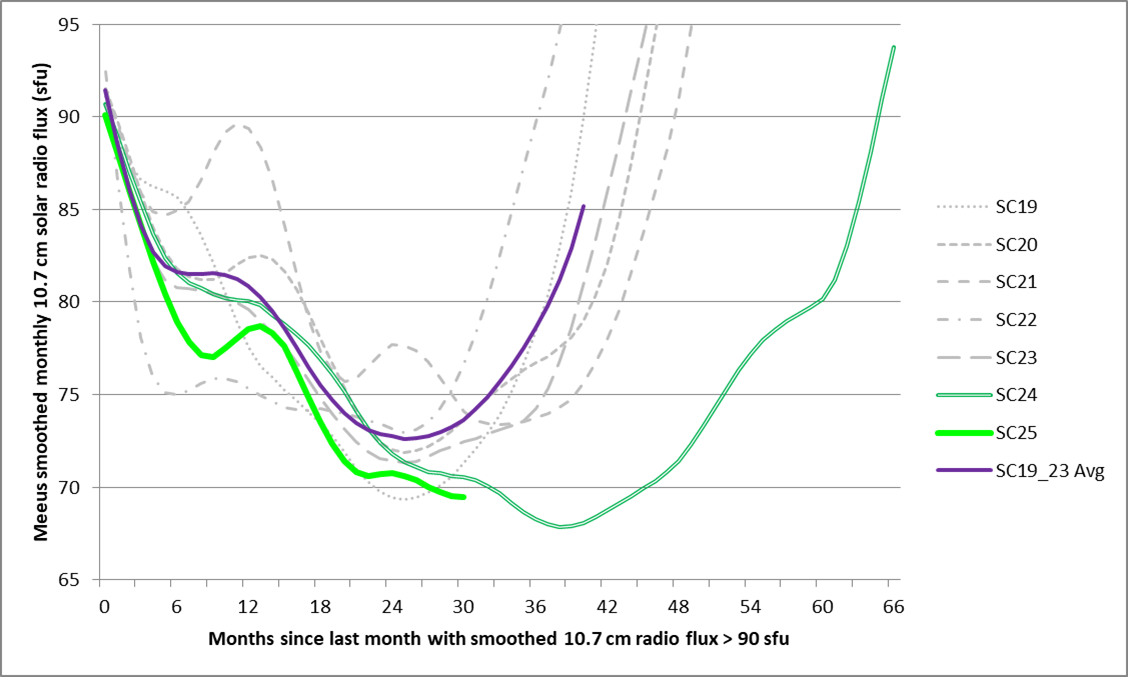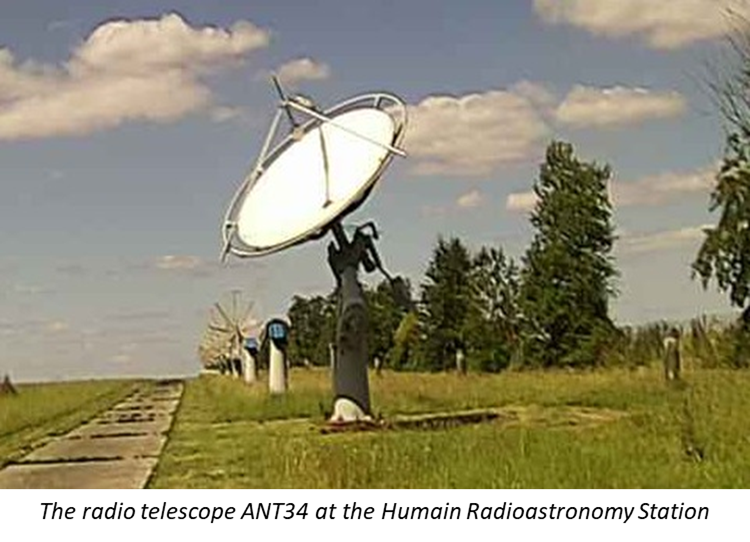The solar radio flux is daily measured at the wavelength of 10.7 cm by the Dominion Radio Astrophysical Observatory (DRAO) in Penticton, BC, Canada. See this STCE Newsitem for more details. This wavelength is very sensitive to conditions in the Sun's upper chromosphere and at the base of the corona, and thus a very good indicator of solar activity and proxy for the sunspot number. Indeed, since measurements of the radio flux started in 1947, the Meeus smoothed monthly radio flux always reached its solar cycle minimum within two months of the smoothed sunspot number minimum.

The graph above shows the smoothed monthly radio flux for the previous transits of solar cycles 19 thru 23 (SC19, ... , SC23 - grey lines), with the average evolution in the thick purple line. Month "0" corresponds to the last month when the radio flux was above 90 sfu (solar flux units - see link to the newsitem above). The double green line is the smoothed evolution of the previous cycle transit (SC24), and the thick fluo-green line is the current evolution of the radio flux. It's clear that the evolution towards SC25 is gradually starting to be more similar to the evolution of the previous solar cycle (SC24), and to deviate more from the 5 solar cycles before that. IF the current evolution of the smoothed radio flux continues to mimick that of the previous solar cycle transition (SC24), then a cycle minimum can be expected somewhere around August 2019. Note a healthy error margin is appropriate, as there's a 4 month uncertainty for the radio flux timing, and -as stated before- a potential 2 month difference with the sunspot cycle minimum. Of interest too is that a similar approach for the International Sunspot Number (ISN) puts the minimum in January 2020. This means that both timings for the solar cycle minimum fall in the first half of the prediction range announced by the international SC25 prediction panel a few months ago (see this STCE Newsitem).






